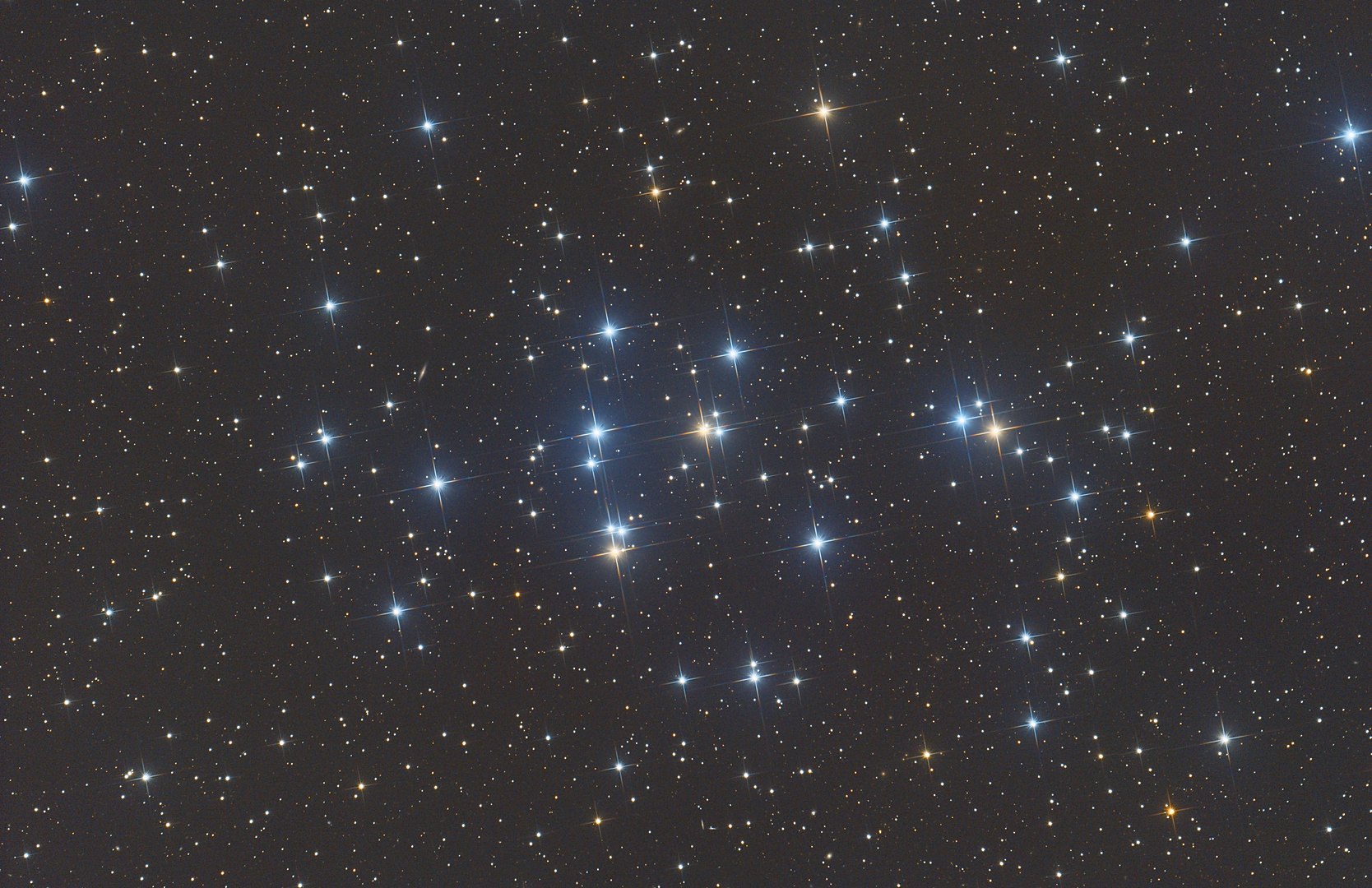Don't miss the crescent moon shining close to Mars on May 31
As the bright star Regulus and the Beehive Cluster shine close by.
The moon will appear to skip over Mars between the nights of May 31 and June 1, appearing to grow ever larger ahead of its first quarter phase next week.
Stargazers in the U.S. can find the moon roughly 35 degrees above the western horizon an hour after sunset on May 31, with the stars of the constellations Leo (left) and Cancer (right) shining on either side. Mars will be visible as a bright reddish point of light approximately 7 degrees to the upper left of the sickle moon. Remember, you can judge distances in the night sky using nothing but your outstretched fist: The distance between your thumb and the other side of your clenched fist will take up around 10 degrees of sky, while the width of a single finger accounts for 1 degree.
Aside from the Red Planet, the famous Beehive Cluster of stars will be visible to the lunar disk’s lower right near the center of the cosmic crab, represented by the stars of the Cancer constellation. While the Beehive Cluster is visible to the naked eye under dark skies, a pair of 10x50 binoculars will bring out the majesty of the 1,000-strong 'hive' of stars.
The moon is set to make its closest apparent approach to Mars at 6:52 a.m. EDT (1052 GMT) on June 1, at which time the two worlds will be separated by a little over 1 degree in the sky, according to stargazing site in-the-sky.org. This will happen during the day for stargazers in the U.S., while the pair are hidden well below the horizon.

Want to see the planets of our solar system for yourself? The Celestron NexStar 4SE is ideal for beginners wanting quality, reliable and quick views of celestial objects. For a more in-depth look at our Celestron NexStar 4SE review.
By the time the sun sets on June 1, the moon will have skipped past Mars to appear on the Red Planet's upper left, with a little over 5 degrees separating the two solar system bodies. Regulus, one of the northern hemisphere's brightest stars, will be visible shining to the left of the moon soon after twilight falls. Its crescent form will appear to travel around the bright star as the night unfolds, before eventually setting atop it around midnight local time.
The next night will see the moon appear fuller ahead of its first quarter phase on June 2, at which point half of its disk will be bathed in direct sunlight from the perspective of Earth.
Photographers hoping to capture the wonders of our solar system after sunset should check out our guides on the best cameras and best lenses for astrophotography. Those looking to see the light cast out from distant stars and galaxies should also read up on our roundups of the best binocular and telescopes deals available in 2025.
Breaking space news, the latest updates on rocket launches, skywatching events and more!
Editor's Note: If you snap a picture of the moon and Mars and want to share it with Space.com's readers, then please send your photo(s), comments, and your name and location to spacephotos@space.com.

Anthony Wood joined Space.com in April 2025 after contributing articles to outlets including IGN, New Atlas and Gizmodo. He has a passion for the night sky, science, Hideo Kojima, and human space exploration, and can’t wait for the day when astronauts once again set foot on the moon.
You must confirm your public display name before commenting
Please logout and then login again, you will then be prompted to enter your display name.


